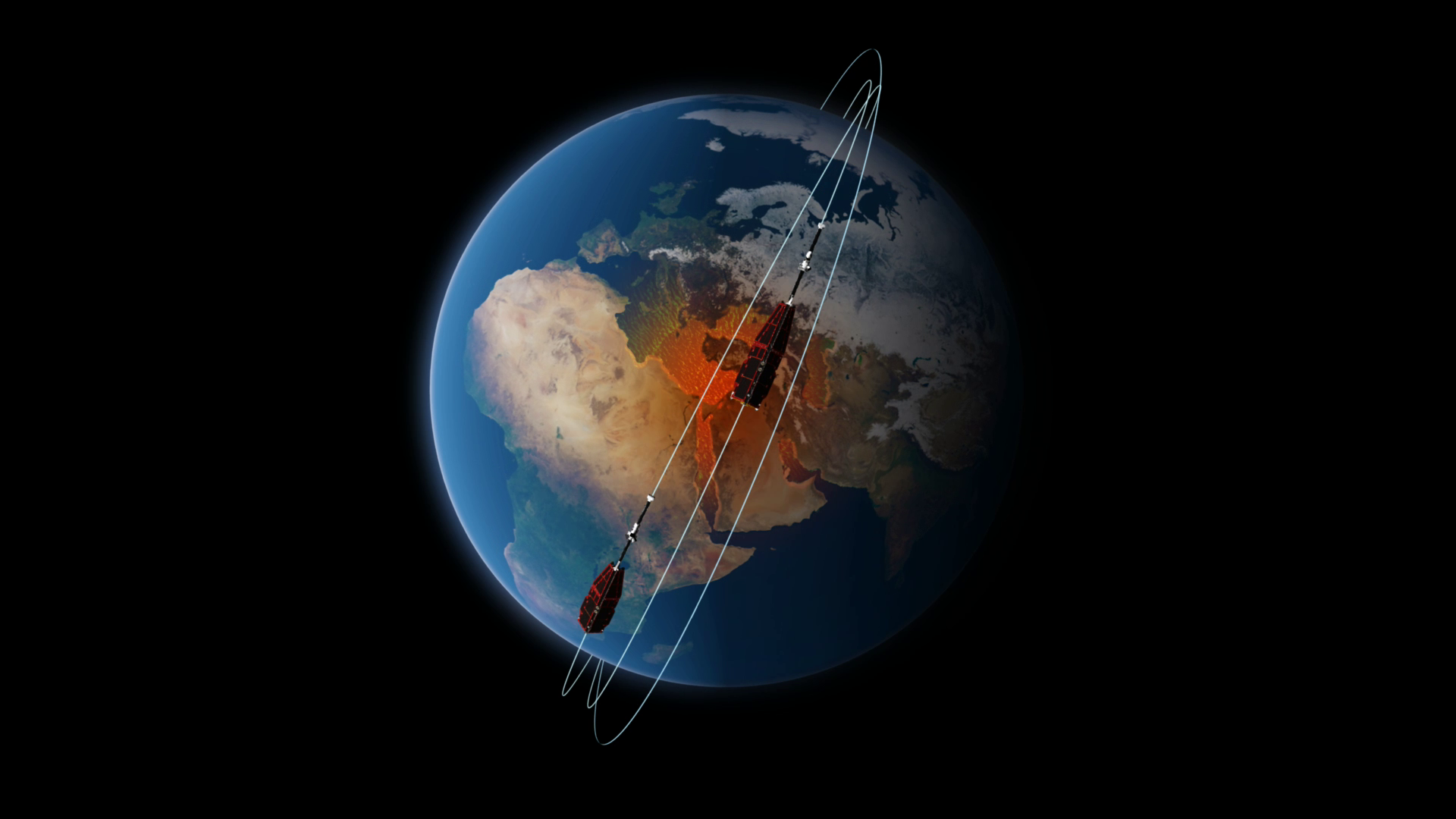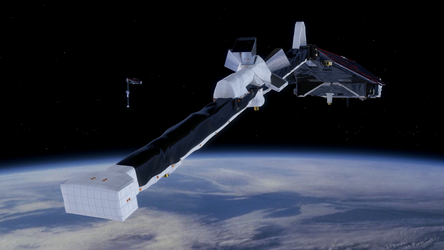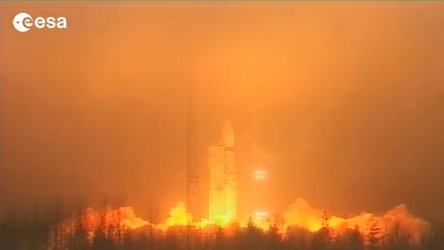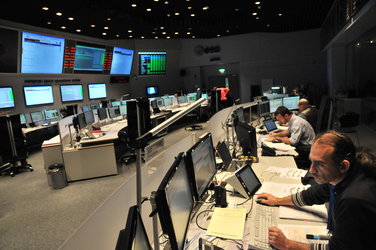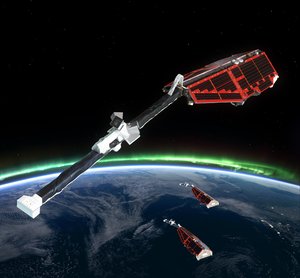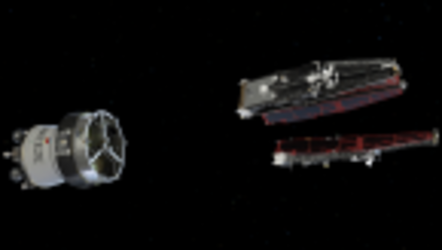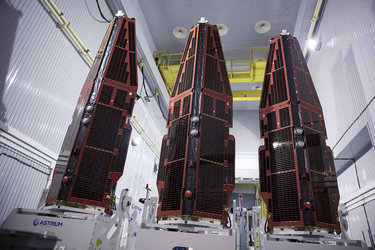End of the beginning for Swarm trio
Reaching a significant milestone for ESA’s magnetic field mission, the Swarm satellites have completed the critical first phase of their new mission.
Over the weekend, ground controllers at ESA’s European Space Operations Centre in Germany shepherded the three satellites through multiple checks, ensuring that all systems were working as expected.
The fog-shrouded launch of Swarm on 22 November brought the three satellites into orbit at about 490 km altitude, marking the end the Rockot launcher’s mission and the start of Swarm’s.
This latest Earth observation mission is tasked with delivering exacting data to improve our understanding of how our planet’s magnetic field is generated and why it changes.
Perfect acquisition of signals
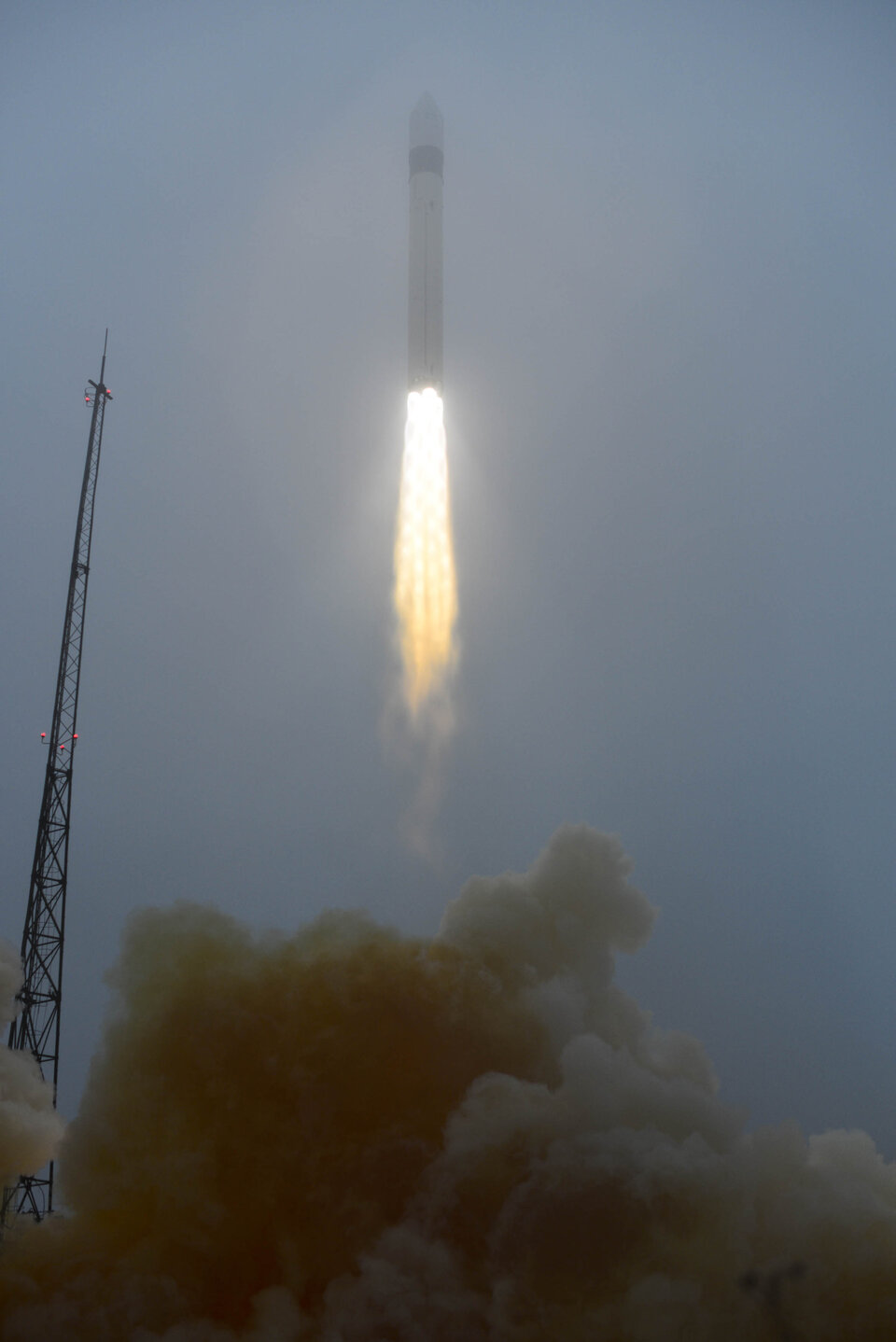
Immediately following separation, the three satellites started transmitting their first signals to Earth, marking the start of the critical ‘launch and early orbit phase’, known as LEOP.
“After separation, we acquired signals from the first two Swarm satellites 91 minutes into the mission, followed by the third at the 95-minute mark, all precisely as planned,” says a happy and relieved Juan Piñeiro, Spacecraft Operations Manager.
“This marked the start of LEOP, and the mission team was in the Main Control Room around the clock. Everything has gone very well, and I am very proud of the strong teamwork and dedication shown by everyone.”
The highlight of LEOP came around midnight on Friday, when each of the three satellites deployed their 4 m-long booms carrying instruments essential to the mission’s scientific success.
The rest of the weekend was spent configuring and checking out the satellites’ systems, including power and thermal, attitude and orientation control and onboard data handling.
The three identical satellites are in excellent health, and are now operating in ‘fine pointing mode’, in which the startrackers and GPS navigation are switched on.
Trouble-free launch and early orbit phase
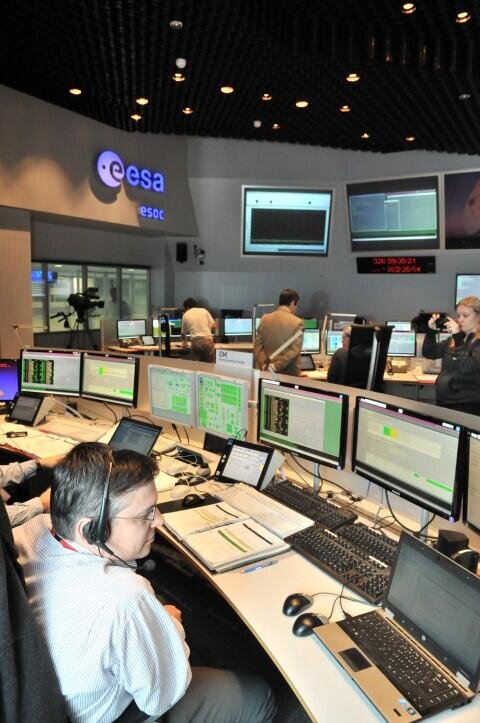
LEOP was formally declared as completed by Flight Operations Director Pier Paolo Emanuelli on Sunday evening at 19:30 GMT (20:30 CET), and the mission entered the commissioning phase, which will last around three months.
“We’ve had a trouble-free LEOP and the satellites are performing beyond expectation,” says Emanuelli. “We’re looking forward to an excellent mission.”
As part of the commissioning phase, engineers will successively switch on the instruments and conduct numerous calibration activities, some of which will involve attitude manoeuvres, orbiting, for example, sideways or backwards.
The satellites will also be shifted into their routine orbits, two at 460 km and one at 530 km altitude.
The data from this new mission, planned to last four years, will be used to study the mysteries of Earth’s magnetic field, its interactions with the solar wind and relation to global change.
"We’ve been able to achieve this success thanks the teams at Astrium – the prime contractor – and the numerous partners who built and tested the satellites; the accuracy and performance of the Rockot launcher; and the expertise and hard work of many teams across ESA and at our partners involved in Swarm,” says Yvon Menard, Swarm Mission Manager.















 Germany
Germany
 Austria
Austria
 Belgium
Belgium
 Denmark
Denmark
 Spain
Spain
 Estonia
Estonia
 Finland
Finland
 France
France
 Greece
Greece
 Hungary
Hungary
 Ireland
Ireland
 Italy
Italy
 Luxembourg
Luxembourg
 Norway
Norway
 The Netherlands
The Netherlands
 Poland
Poland
 Portugal
Portugal
 Czechia
Czechia
 Romania
Romania
 United Kingdom
United Kingdom
 Slovenia
Slovenia
 Sweden
Sweden
 Switzerland
Switzerland

























